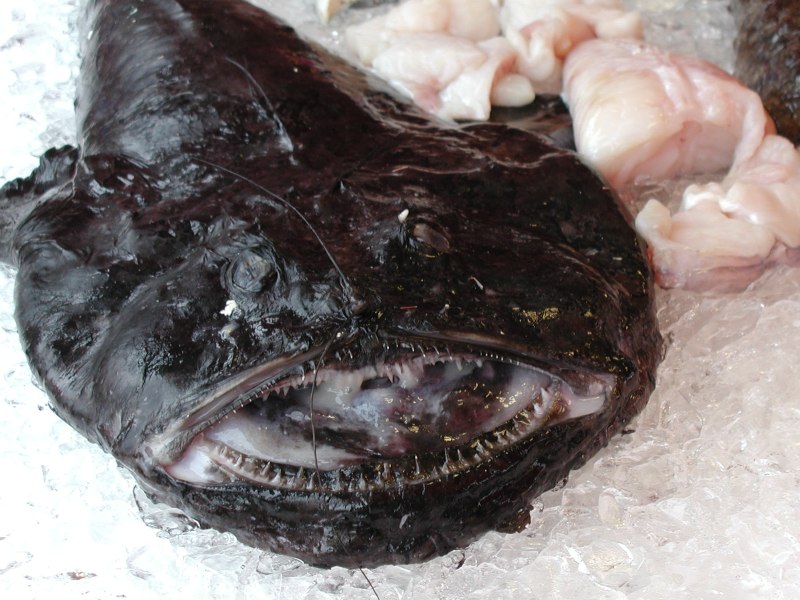 Having a friend/friends to stay is a great incentive (and excuse) to get some nice fish in and indulge in some hearty gastronomic adventures.
Having a friend/friends to stay is a great incentive (and excuse) to get some nice fish in and indulge in some hearty gastronomic adventures.Last week presented such an opportunity so I scanned my latest favourite fish recipe book, 'The Billingsgate Market Cookbook' by C.J. Jackson, for some inspiration, then took to the Co-Op to find some ingredients roughly equivalent to the ones given in the recipes. And from there onward to the butcher (?!) to collect a lovely big monkfish tail. Later I even managed to accost the flighty fishman on his weekly hurtle from east to west, and purchase a goodly pile of mackerel fillets.
I'm not great with recipes. I mean, I'm not 'stone soup' (I'll explain later) with them, as my mother can be. But I feel I have somehow failed if I actually follow one without modification. Thus it was with my monkfish recipe. It was roughly equivalent to one given for scallops in 'Billingsgate' but I thought that the monkfish would work well, as it can take strong flavours. I dislike pfaff (sounds like an ingredient) in recipes so 'Billingsgate' is a cookbook after my own heart: a bit too 'luverly jubbly' and 'eating battered cod and mushy peas with me old nan' in places perhaps, but satisfyingly stripped-down and straightforward with a minimum of fuss. Unlike that last sentence.
Monkfish (Lophius piscatorius) is a member of the not-overly-attractive Anglerfish species. It has an enormous head (they are sometimes known as Headfish) and a relatively tiny body and tail. All the eating is the body/tail part, although I'm sure you could make a fine if somewhat scary stock with the head. They are sold without the head on and are easy to prepare: pull off the tough skin from head end towards the tail; slice away the slimy membrane; cut tight along the edge of the pin-bone-free backbone on either side to release the fillets.
The meat is dense and succulent. It was commonly used in place of prawns for making 'scampi' - what a waste. I simply fried some thickly-sliced chorizo then set it aside while I cooked up the monkfish in the delicious red chorizo oil. I added red pepper (home grown) and a little red chilli before returning the chorizo to the pan and adding lemon juice, parsley and seasoning. Served up with couscous with some sundried tomato chopped through, it's sure to put a little Mediterranean (sic) into your bleak Highland winter night.
Oh, nearly forgot the stone soup. You've probably heard it: the fairytale of the hungry pauper who manages to get into the castle for a meal by telling the king that he has a magic soup-making stone. He tells the royal cooks that they simply need to add water, meat, vegetables and seasoning to a large pot with the 'magic' stone in it and it will make some of the best soup they have ever tasted. My wife tells a version with a nail in place of a stone but I reckon a rusty nail might add some nice irony (ironey?) flavours.
The rather circuitous reference to the stone soup and my mother's cooking is to do with the way she has been known to treat recipes. It seems to me that she'll look at the ingredients then choose ones that are so far removed from those given that there's perhaps no semblance of the recipe in there. One example is a Banoffee (banana and toffee) pie which she told my wife she wouldn't like, my wife not being a fan of bananas. It turned out that the 'Banoffee' pie was actually Malteser (which my wife is certainly partial to) chocolate pie.
Perhaps you'll find recipes more fun if you take them with a pinch of salt. No, there's something wrong with that sentence too.
This is odd. Just looked up the Wikipedia entry for Banoffee pie and it says that it was invented (though this is disputed) at 'The Hungry Monk' restaurant. Had no idea when I wrote this that Banoffee pie had any connection to monks of any kind.
ReplyDelete